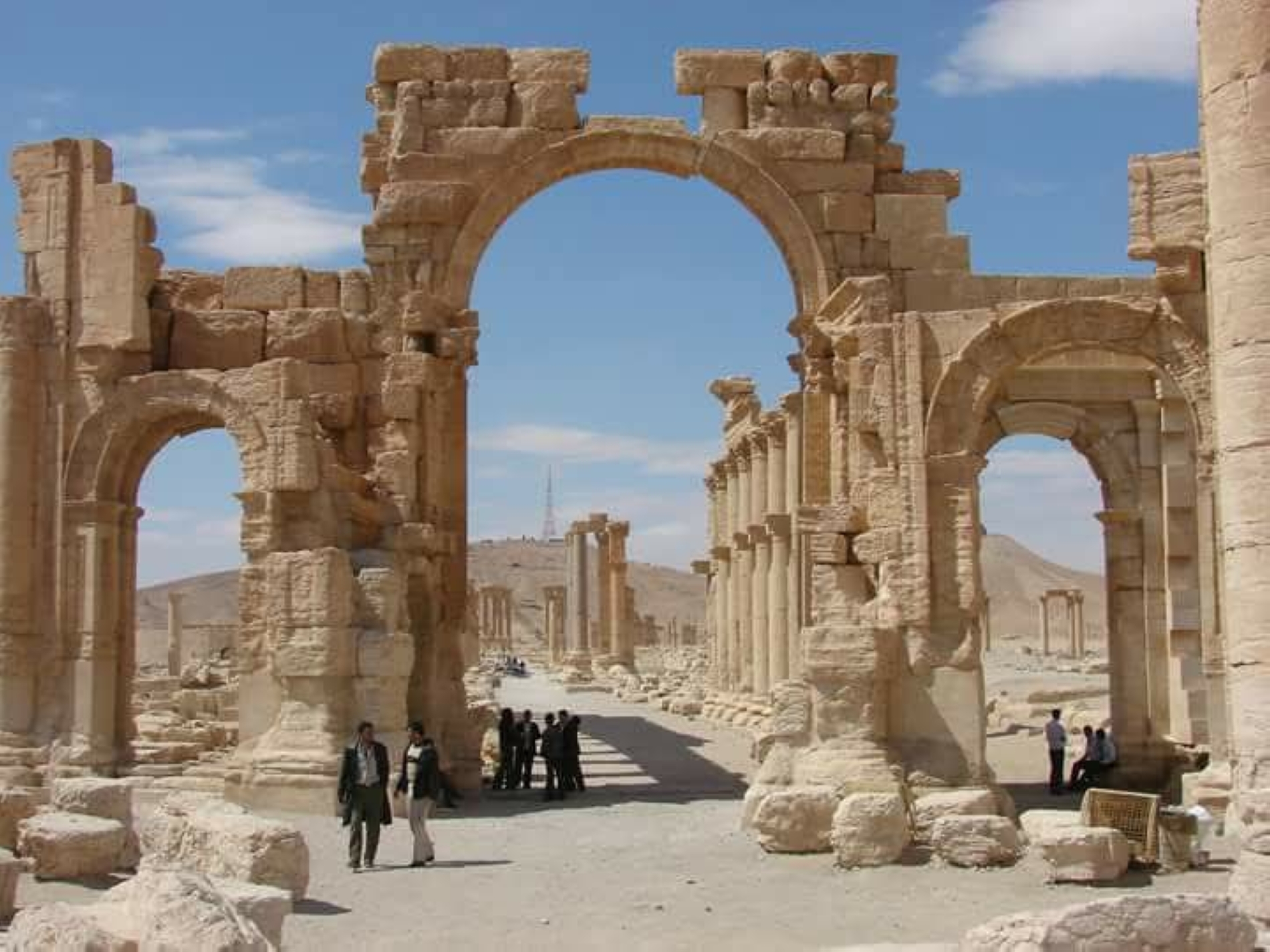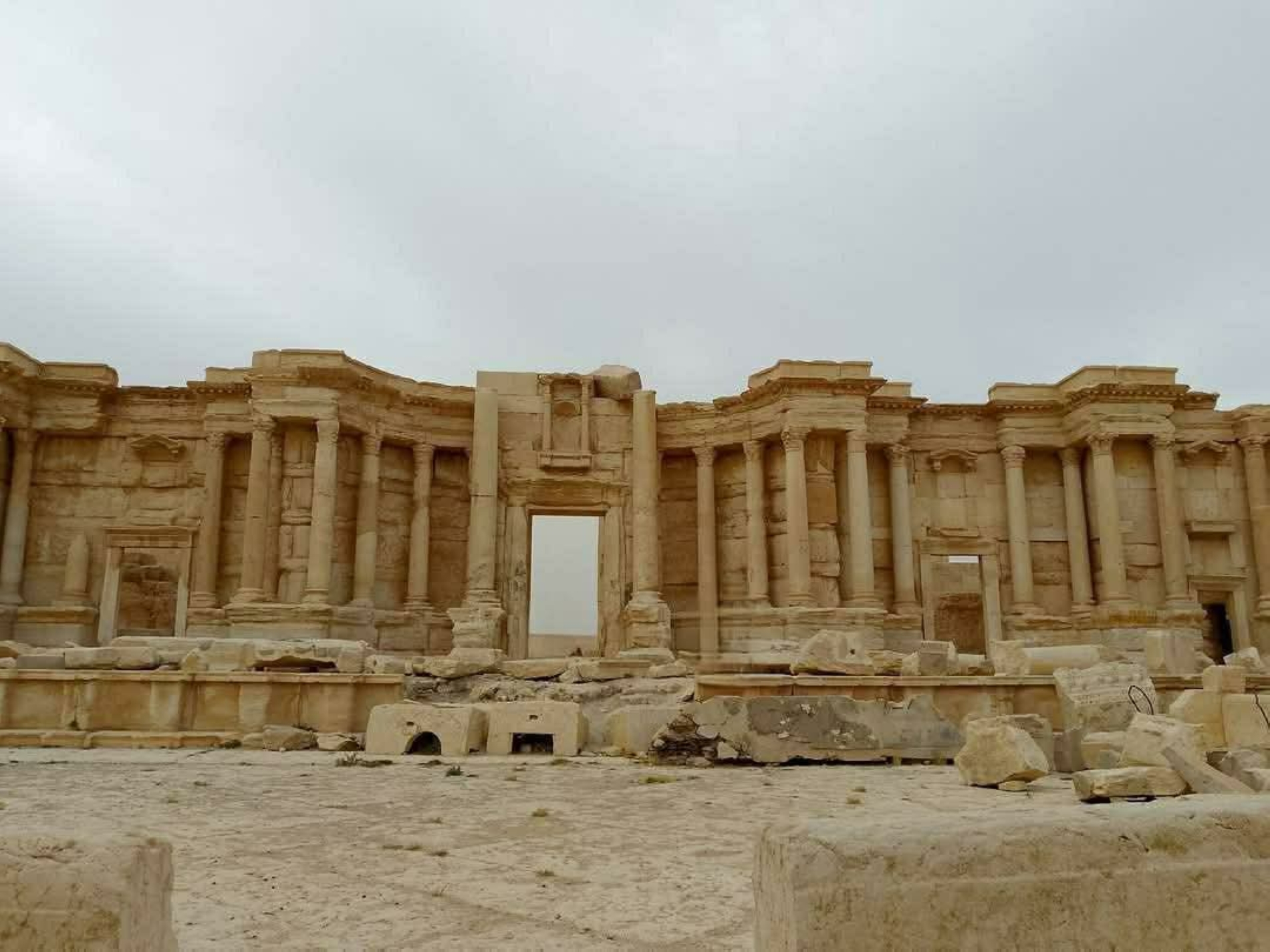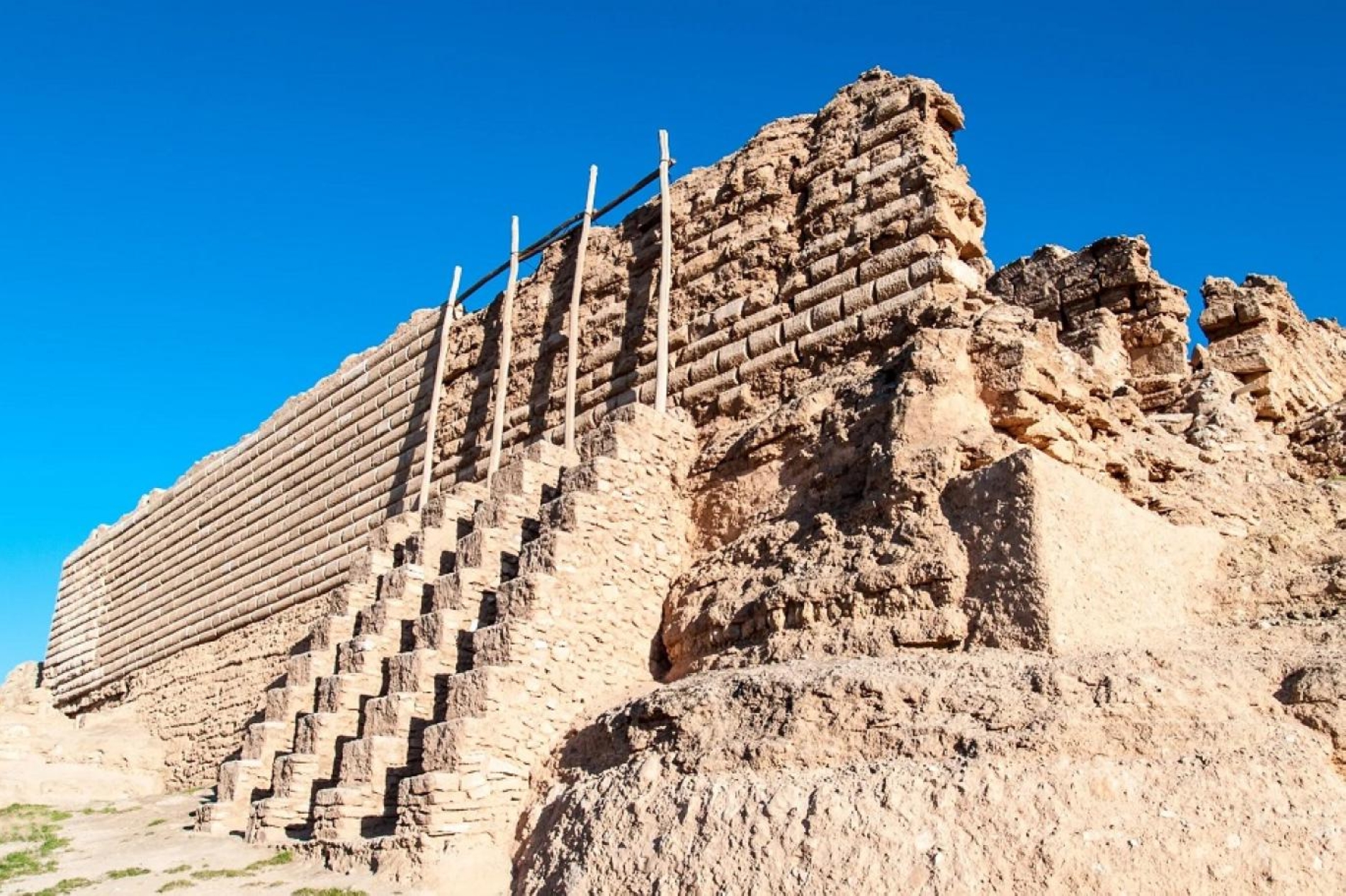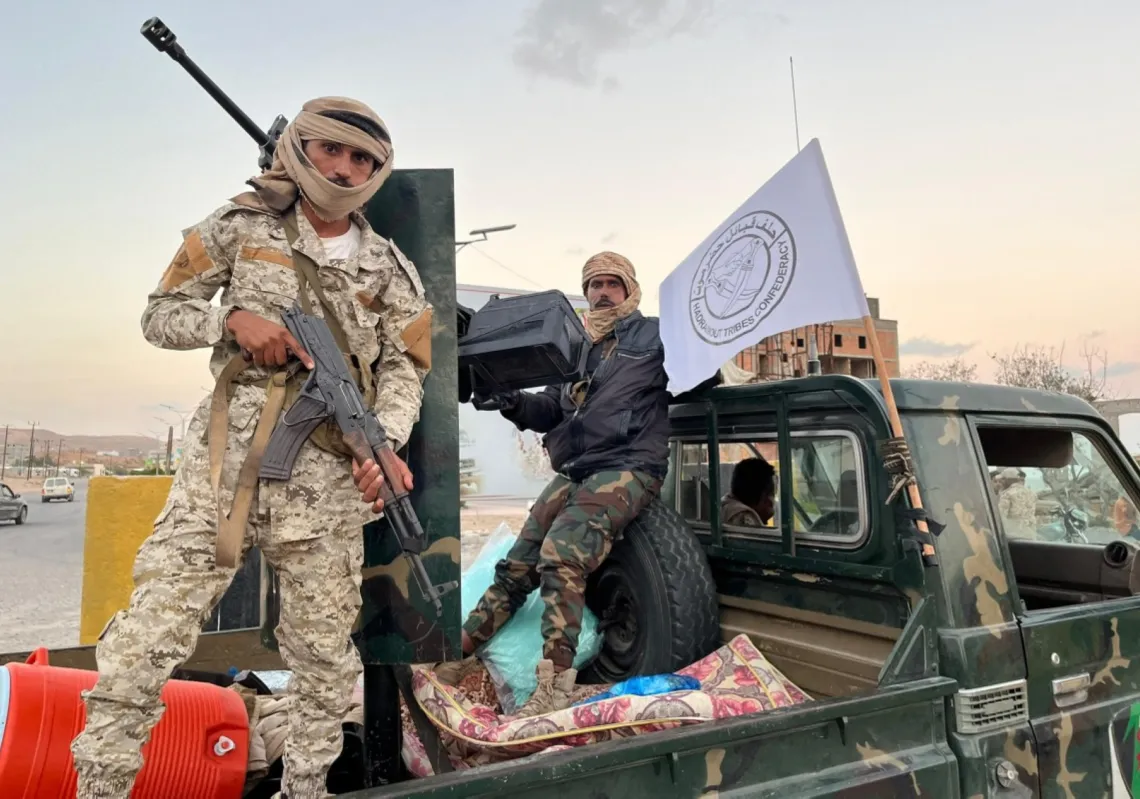Syria is one of the most archaeologically rich regions of the ancient Near East. Strategically located at the crossroads of trade, military, and cultural routes, it was a meeting point for major civilisations, including the Akkadian, Aramean, Babylonian, Pharaonic, Hellenistic, Persian, Roman, and Islamic empires. Their enduring legacies are embedded in the country’s vast array of historical sites, which offer invaluable insights into both the region’s past and the broader evolution of human civilisation.
And yet, Syria’s cultural heritage has been mercilessly plundered. In an attempt to grasp the true scale of the looting, smuggling, and destruction that has befallen the country’s historical sites—both prior to and during the civil war—Al Majalla spoke to some of Syria’s leading heritage experts. Their insights lay bare the grim reality of the illicit trade in antiquities by those intent on distorting Syria’s historical memory.
Vanishing heritage
The excavation of antiquities in Syria dates back to the mid-19th century but became more systematic and organised after the First World War. The French established the Directorate-General of Antiquities in Syria in 1920, leading to the excavation of several sites, including Tell al-Mishrifeh (north-east of Homs) in 1924, Arslan Tash (south-east of Kobani/Ain al-Arab) in 1928, Til Barsip (Tell Ahmar, south of Jarablus) in 1929, Ugarit (near Latakia) in 1929, and Mari (Tell Hariri, near Al-Bukamal) in 1933.
“Over time, dozens of European and American archaeological missions arrived and operated across most Syrian provinces, particularly in the Jazira region,” says Farouq Abbas Ismail, a researcher affiliated with several German universities. “Statistics from the antiquities directorates of its three governorates—Raqqa, Deir ez-Zor, and Hasakah—indicate the existence of around 1,700 archaeological sites.”
With the outbreak of the Syrian revolution on 15 March 2011, administrative oversight of these sites effectively collapsed. As a consequence, the majority fell prey to unauthorised digging and looting, either by individuals pursuing commercial gain or, more systematically, by armed groups seeking to fund their military operations.
Age-old phenomenon
According to the archaeologist and researcher Adnan al-Mohammed, the plundering of historic sites is nothing new. Nobles and high-ranking officials were often buried with their belongings, making their tombs prime targets for thieves. However, the large-scale looting of Syrian antiquities began around 2000, asserts Abdul Razzaq Muaz, a researcher in archaeology and history, driven by widespread poverty and economic hardship, which compelled people to search for and trade in artefacts.
Among the sites most affected is the ancient city of Mari (Tell Hariri). Its archaeological features—meticulously uncovered over 70 years by a French archaeological mission—have been largely obliterated. Mari was a prominent Amorite kingdom in the 18th century BCE, says Ismail, renowned for its royal palace, numerous temples, exquisite artworks in both high and low relief, precious metal artefacts, and the most significant cuneiform archive ever discovered in Syria.

Nearly all of Syria’s major archaeological sites have suffered from looting and destruction, states Youssef Kanjo, a researcher at the Institute for the Study of the Ancient Near East at the University of Tübingen in Germany. He identifies Apamea as one of the most severely damaged, describing it as among the country’s foremost archaeological sites.
The “so-called ‘Dead Cities’ of north-western Syria have been systematically plundered using bulldozers and metal detectors,” adds al-Mohammed, who reports a marked increase in the appearance of Palmyrene funerary sculptures and paintings in north-western Syria, near the Turkish border, and in southern Lebanon. In other words, in places where they don’t naturally belong. The region, he notes, has become “a clandestine global hub for the black-market trade in Syrian antiquities.”
A dark chapter
The chaos that has engulfed Syria in recent years is among the principal factors behind the widespread looting, theft, and loss of the country’s historical legacy. “I can say with certainty that all archaeological sites have been violated—stolen from and looted,” says Yasser al-Shouhan, former director of the Deir ez-Zor Museum. “But the most affected was the site of Dura-Europos, where numerous illegal excavations took place.
“Many funerary statues and carved stones were stolen from the city of Palmyra and smuggled to several countries, most notably Jordan, Türkiye, and Israel,” adds al-Shouhan. “This is in addition to Mari, Krak des Chevaliers, Old Aleppo, al-Bara and Serjilla in Idlib, and al-Rusafa near Raqqa.”
According to al-Shouhan, Syria tops the list of war-torn countries affected by cultural looting, including Yemen, Libya, and Iraq. He attributes the magnitude of the illicit trade in antiquities to “deep-rooted social, political, and economic factors that have facilitated or excused such violations.” The illicit trade serves two primary purposes, he says: “Either as a means of survival amid extreme poverty in conflict zones, or as a source of funding for warring factions, amid a complete security collapse.”
Secret excavations
The former regime not only brutalised the Syrian people, it inflicted lasting damage on the nation’s historical legacy, conducting arbitrary excavations and looting dozens of archaeological sites. Following the outbreak of war, the looting and encroachment on such sites continued without interruption. “Everyone began chasing wealth in a country that had effectively collapsed,” explains Muaz.

“In the absence of archaeological oversight, unauthorised excavations surged dramatically,” adds Anas al-Khabour, former director of the Raqqa Museum. “Smugglers even employed heavy machinery for arbitrary digging.” This disrupted the historical sequence of many sites and created substantial gaps in the understanding of their development over time. “By 2015, over 177 sites in the Jazira region alone had been damaged,” reports al-Khabour.
“Secret excavations and the subsequent theft of antiquities were already occurring before the Syrian revolution,” Kanjo affirms. “At the time, such activities were confined to individuals with backing from the regime and its security apparatus, often carried out at night in specific locations and entirely beyond the oversight of heritage authorities or legal documentation.” During the revolution, many people turned to clandestine digging, which had previously been monopolised by the regime. “This, coupled with the deepening economic crisis, triggered a sharp increase in illicit activity following the regime’s fall, as numerous sites were left unguarded and public awareness of heritage value diminished,” adds Kanjo.

















